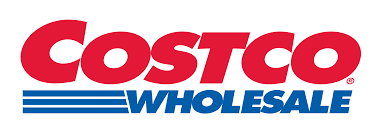Introduction:
The purpose of this report is to discover the different ways Costco uses Management Information Systems to enhance their productivity and efficiency.
The size of Costco is extensive with a yearly revenue of $227.0 billion dollars, and a Market Cap. of $246.62 billion dollars. It has 859 locations globally, with a split of 69% domestic (591 stores) and 31% international (268 stores).
Product lines include groceries, candy, appliances, television and media, automotive supplies, tires, toys, hardware, sporting goods, jewelry, watches, cameras, books, housewares, apparel, health and beauty aids, furniture, office supplies and office equipment.
It has 118.9 million members and 304,000 employees as of 2022.
Business Strategy:
Costco’s generic strategy is cost leadership. This strategy entails maintaining the lowest prices possible. Costco’s strategy also combines the membership warehouse club business model to differentiate it from other retail firms. Their information system supports their strategy because by processes like automating and consolidating data Costco can improve its efficiency and make it more difficult for customers and substitutes to replicate its offerings. Information Systems help Costco track customer behavior and preferences.
Five forces for Costco
Competitive rivalry
Bargaining power of buyers or customers
Threat of substitutes or substitution
Threat of new entrants or new entry
Bargaining power of suppliers
Costco is known for being Member Oriented. The competitive strategy of Costco is having its own private label (Kirkland). The discounted prices for higher quality and quantity products. This leads members to pay membership fees.
Competitive Strategy:
- Costco's competitive strategy is based on low price level, ultra-low markups, and high-sales volume which makes customers believe they are saving money when they shop. By using this strategy Costco became the first company in the United States history that reached one billion dollar sales in less than six years.
- Costco’s value chain activities include product design, production, marketing and distribution, and retail operations.
- The company emphasizes customer service through customer satisfaction surveys and feedback, constantly striving to improve operations and provide the best value for customers.
Customer filtering.
Costco’s subscription model discourages low-income customer groups from becoming members, like students and small household tenants. That ensures a larger average spend per shopping trip.Supplier independence. Since Costco makes most of its profits from its membership fees and has a more exclusive customer base, it doesn’t need a big variety of products. As a result, it can be more picky with its product and supplier selection, increasing its negotiating leverage.
A loyal culture.
Costco has one of the most supportive cultures in the business world. It pays its employees above average, provides rare benefits and powerful leadership initiatives. That’s why it enjoys a triple retention rate than the industry average (90%) and increased productivity. Also, customers feel employee loyalty by having a pleasurable experience while buying.A cheap design.
Maintaining an industrial decoration keeps operating costs at lower levels and the “I’m getting a bargain” feeling at higher levels.

